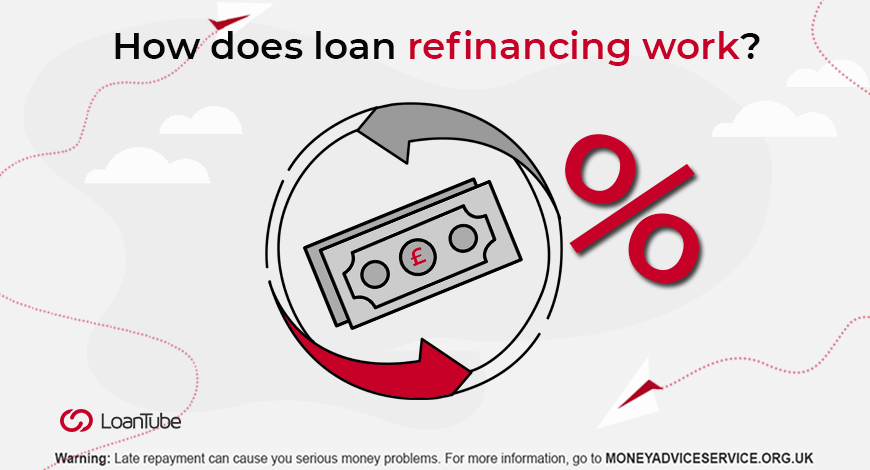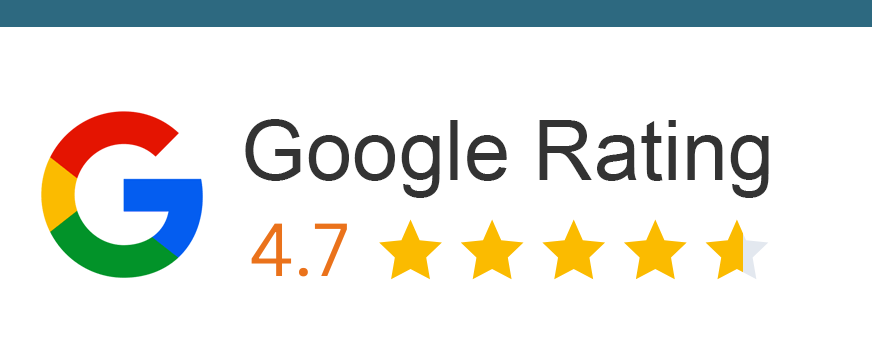Who doesn’t want to save money? Refinancing your personal loan could significantly lower your monthly repayment amount. But before you start exploring options for refinancing your personal loan, you should know how it works. Learn how refinancing a loan will impact your credit history. ⭐Personal Loan⭐ Financial Tips
Personal loans are a great option when it comes to covering expenses or shortfall in expenses. Whether you are planning for making home improvements, or you are considering using it to fund your dream vacation – it can help you spread the cost. But what if your loan has become expensive and you are finding it difficult to manage? What if you are getting a personal loan at an interest rate lower than your current loan? A loan refinancing may seem a viable option during such situations. Also, our financial conditions may change since we borrowed money. So, is refinancing a personal loan a good idea and completely worth it?
Representative Example: £12,000 over 66 months, 31.9% APR fixed. Monthly payment £358.22 Annual interest rate 28.01% fixed. Interest payable £11,642.52. Total repayable £23,642.52. Representative Example: £12,000 over 66 months, 31.9% APR fixed. Monthly payment £358.22 Annual interest rate 28.01% fixed. Interest payable £11,642.52. Total repayable £23,642.52. Representative Example: Loan Amount: £20950.00, Loan Term: 85 Months, Interest Rate: 23.00% PA Variable. Monthly Repayments: £537.44. Total Amount Repayable: £45,682.15. This example includes a Product Fee of £2,095.00 (10% of the loan amount) and a Lending Fee of £714.00 Representative Example: Loan Amount: £20950.00, Loan Term: 85 Months, Interest Rate: 23.00% PA Variable. Monthly Repayments: £537.44. Total Amount Repayable: £45,682.15. This example includes a Product Fee of £2,095.00 (10% of the loan amount) and a Lending Fee of £714.00 Representative Example: Borrowing £3000 over 36 months with a representative APR of 39.9% (variable),the amount payable would be £134.21 a month,with a total cost of credit of £1831.56 and a total amount payable of £4831.56. Representative Example: Borrowing £3000 over 36 months with a representative APR of 39.9% (variable),the amount payable would be £134.21 a month,with a total cost of credit of £1831.56 and a total amount payable of £4831.56.Maximise your options: Compare and apply for loans below with LoanTube
Apply Filters

Loan Amount
£4000 -
£20000
Norwich Trust
Loan Term
1 -
10 years
4.8/5
Representative APR
31.90%
Minimum Age
21 Years

4.8/5
Norwich Trust
Loan Amount
£4000 -
£20000
Loan Term
1 -
10 years
Representative APR
31.90%
Minimum Age
21 Years
Minimum Income
£2000 per month

Loan Amount
£5000 -
£100000
Evolution Money Loans
Loan Term
1 -
20 years
4.5/5
Representative APR
28.96%
Minimum Age
18 years

4.5/5
Evolution Money Loans
Loan Amount
£5000 -
£100000
Loan Term
1 -
20 years
Representative APR
28.96%
Minimum Age
18 years
Minimum Income
Not mentioned

Loan Amount
£1000 -
£10000
1Plus1 Guarantor Loans
Loan Term
1 -
5 years
4.4/5
Representative APR
39.90%
Minimum Age
18 years

4.4/5
1Plus1 Guarantor Loans
Loan Amount
£1000 -
£10000
Loan Term
1 -
5 years
Representative APR
39.90%
Minimum Age
18 years
Minimum Income
Not mentioned
In this article, we will discuss:
- How does loan refinancing work?
- 5 Reasons to refinance a personal loan
- Advantages of refinancing a personal loan
- Disadvantages of loan refinancing
- 3 ways loan refinancing affects your credit score
- How to refinance your personal loan?
- 5 things to consider before refinancing your loan
How does loan refinancing work?
A loan refinancing option allows you to replace your existing debt with a new loan that has favourable terms as compared to the current one. Please do not confuse this with a debt consolidation loan, which works a bit differently.
With a debt consolidation loan, you are allowed to combine all your existing debts and roll them into one for making single repayments instead of multiples repayments. While a personal loan refinancing means replacing your “existing” loan with a new one – if the new one has a lower rate of interest (typically).
If you apply for a loan refinancing and your application is approved, your agreement will be updated. You may now get a more convenient repayment structure with lower monthly repayments. In short, refinancing a personal loan makes it more affordable. Borrowers also refinance their debts to repay the debt faster. Though some long-term loans allow for lower monthly payments, they also have higher overall costs due to the extra time that the borrower gets to repay the loan. Interest gets accrued, which spikes the overall borrowing cost.
5 Reasons to refinance a personal loan
There could a lot of reasons for refinancing a personal loan. We have listed 5 popular reasons people consider the option of refinancing:
1. Topping up the current loan
Unexpected expenses may strain our finances. If you have existing debt and you need to borrow more money due to an unforeseen event that suddenly needs your monetary attention – you can top it up. Topping up the loan does not actually add more money to your existing loan. You are simply applying for a new loan for the outstanding balance on your existing debt plus the additional money you are about to borrow. The interest rate of the new loan may be different than the original loan. If that’s the case, you will have to a different monthly amount.
2. Removing a co-signor
You may remove your guarantor while refinancing your loan. There are many reasons why you might want to do that. Suppose, your spouse was your loan guarantor and now you are divorced. And you want to remove them from your financial accounts. You may ask your lender if they can help you with removing your guarantor. If not, then you can consider refinancing.
3. Payment holidays
We all need a break sometimes. Some lenders offer their borrowers some months of payment holidays. That means you will not have to bear the burden of repayment for the first few months after your loan is approved. If you have a financial crunch and you need to have a break from the repayments for a few months – loan refinancing may be the right option. Start paying the loan once your repayment period starts.
4. Better loan terms
There are chances that you may find a better deal and terms as compared to your current loan. If that is the case, you will have to pay a lower monthly repayment amount, which in turn will help you save money. But before you consider the new option, it is better if you compare the two deals using a personal loan repayment calculator. Remember, while comparing the new loan offer with the ongoing one, consider the APR to know the overall cost of borrowing.
5. Save interest
As you will get a new loan in place of the current one – the terms, monthly repayment amount, and duration of the new loan may be different. You will have the opportunity to reduce your repayment period if you find a short-term personal loan. But remember, you may have to pay a higher amount towards your debt every month with a short-term loan.
Advantages of refinancing a personal loan
When you’re considering your options to refinance a personal loan, you should first review the terms of the new deal and see how much you’re currently paying. The primary benefit of refinancing a loan is money-saving, let’s explore the major pros of refinancing a personal loan:
1. Lowers monthly payment
When you replace your existing loan with a new one, your monthly payment amount is likely to reduce and it can happen in 2 ways:
- Less interest rate: If the new loan has a lower interest rate as compared to the current loan, your monthly repayment amount will be reduced.
- Longer repayment period: If you choose a repayment period that is longer, then also your monthly repayment amount will be slashed.
A lower monthly payment can regulate your cash flow allowing you a financial breathing space to manage your monthly budget efficiently.
2. Lowers interest rate
This is the most common reason why people opt for loan refinancing. If you find a deal that has an interest rate lower than the interest that you are currently paying on your debt, you have a chance to lower your financing costs. Such deals are a great way for saving money on debt, especially, if the current loan has a long-term.
3. Allows to switch rate type
If you have a loan at a variable interest rate, the monthly amount will keep fluctuating throughout the loan term. You may end up paying way more than you had expected in the beginning. By refinancing, you can switch your rate type from variable to “fixed”. With a fixed rate of interest, it will be easier for you to plan your finances because of consistent monthly payments.
Disadvantages of refinancing a personal loan
Refinancing sounds an attractive way out of your troubling debt. But there are some pitfalls of refinancing. Consider the disadvantages of refinancing a personal loan before making your decision:
1. High fees
This method to reduce your financing cost can sometimes backfire and you could end up a higher cost. Lenders may charge you a transaction fee based on the principal amount left in your unpaid debt. The fees may vary from lender to lender and will also include the closing cost, or origination fees. If you have a long-term loan, this may shoot up your entire cost of borrowing.
2. Higher interest rates
If you choose a longer repayment period, the overall debt will be more than what you had to pay off initially. This is the biggest disadvantage of refinancing a long-term loan, even if you get an attractive interest rate.
3 ways loan refinancing affects your credit score
Refinancing a loan means you will be applying for a new loan to replace the existing one. That means the lender will run a credit check on your profile to assess it. Listed below are 3 ways your credit score will be impacted if you choose to refinance your personal loan:
1. When you apply for a new loan
Whenever you submit a loan application form to a lender or a lending company, a hard credit check is conducted before the final approval. Hard enquiries leave a footprint on your report and bring down your score level by a few points.
Multiple credit checks within a short time frame may significantly lower your credit score. Space out your loan application to not harm your credit score. Keep a window of 14 to 45 days while applying for loans.
2. When you repay the debt
Paying your debts on time and in full is one of the most popular ways to build your credit score. Your score will gradually increase when you start paying your new loan on time. If you have a bad credit score, you can easily boost it by being a responsible borrower.
But it could impact your score if you do not make regular repayments. You may notice a drop in your score as lenders send a report of your repayment behaviour to Credit Reference Agencies (CRAs) who calculate your credit score.
3. When you close old loan accounts
When you completely repay the new loan that you have taken out to refinance your existing loan – the loan accounts will be closed. These accounts may stay on your credit report for as long as 10 years. The credit score may go down when these closed accounts are dropped off your report. The length of your credit history may decrease when closed accounts are shelved.
How to refinance your personal loan?
This approach will save you money if you apply for a lower rate of interest on a new loan. There might be other situations as well where it makes sense to refinance a personal loan.
Here are 5 typical steps to refinance your personal loan:
1. Calculate the amount you need
Before you start looking for loan quotes to refinance your personal loan, figure out the actual amount you need to repay your existing loan. You can also contact your lender who will help you in determining the exact figure you require.
2. Check your credit
Check your credit score so that you know where you stand. If you have a high credit score, you are more likely to find a loan with low-interest rates. But if your scores aren’t particularly good, you should first work on improving your credit score before considering the option of refinancing. Lower credit scores will always equate to high-interest rates. Therefore, start working on your credit scores.
3. Shop around for lenders
Start comparing loan offers from multiple lenders. Ensure that you are applying to lenders who run a soft check in the initial phase to offer you loan quotes. Soft checks do not impact your credit score.
Prepare a list of all those lenders who meet your criteria. Simply, narrow down the list by going through their lending criteria. Understand what those lenders need in the profiles of their borrowers and check whether you fit in.
4. Understand the costs involved
The lender may charge you an early repayment fee, or an origination fee, which will affect the cost of repayment. Go through the Terms & Conditions offered by the lender on the new loan and discuss it with your lender.
These fees can increase the overall cost of borrowing in the long run, so have a look at the terms of your existing loan too. Read the loan agreement carefully before you proceed to sign on the dotted line.
5. Check for pre-qualification and apply
Pre-qualification means a casual assessment of your profile before a credit check is conducted on your report. You will get to know whether you are eligible for taking out a personal loan to refinance without actually submitting a loan application.
Once you complete the above steps, you can apply for a personal loan.
5 things to consider before refinancing a personal loan
Whenever you are applying for any kind of loan, it’s a smart idea to see how much the new loan will cost you. And also to check how your credit score will affect the terms of the loan you will be offered by the lenders.
Listed below are 5 things to take into consideration before you apply for refinancing a loan:
1. Check the Terms & Conditions
Do not rush as this is an important financial decision. Take your time and go through the Terms & Conditions of the new loan carefully. Do not forget to read the fine print as skipping it may cause trouble in the future.
2. Check for an early repayment fee
If you do not find this information on your T&C, contact your lender and ask them about it. Know whether you will have to bear any additional expense other than that mentioned in the loan agreement. If yes, then why and also ask them to revise the loan agreement by including that amount.
3. Ensure loan affordability
Refinancing sounds like an easy way out. But can you afford all the repayments? Do not opt for such debt repayment strategies if you cannot repay the loan. Not repaying the loan on time may impact your credit score severely.
4. Review your credit report
Check your credit report for errors. There could be errors on your credit profile which may lead to a wrong assessment of your profile. It will impact your loan borrowing process. Therefore, check the report beforehand and if you find any errors, flag them to one of the CRAs to get it rectified.
5. Review the lender
Run a Google search on the lender you are about to deal with. Find out reviews from previous customers to know the reputation of your credit provider. The lender must be authorised by the Financial Conduct Authority (FCA).
The bottom line
If you have a personal loan with a high-interest rate or you think your current credit scores will help you qualify for a new loan with low-interest rates – weigh the pros and cons of refinancing. If refinancing will help in lowering your monthly payments or help you save money, then it may be a feasible option.
Understand the new deal, check for the interest rates, and any fees associated with it, and also take into account your credit score. Find the answers to all these questions and if you find a loan with favourable terms, then go ahead with refinancing.


